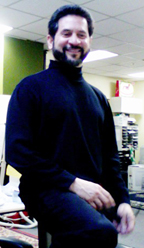NOTE FROM THE EDITOR:
My research on controversial topics continues to pay off. I found this excellent and interesting article, which, due to its length, it will be published in parts. In this piece you will learn about how is that President John Fitzgerald Kennedy’s Executive Order 11110, gave the Treasury Department Constitutional power to again create and issue currency -money – without going through the privately-owned Federal Reserve Bank, which is what is currently done now. It suggests that JFK was killed for that reason. FORTH PART OF A SERIES.
by John-F-Kennedy.net
Keep that fractional banking concept in mind as we examine our first central bank, the First Bank of the United States (BUS). It was created, after bitter dissent in the Congress, in 1791 and chartered for 20 years. A scam not unlike the current FED, the BUS used its control of the currency to defraud the public and establish a legal form of usury.
This bank practiced fractional lending at a 10:1 rate, ten dollars of loans for each dollar they had on deposit. This misuse and abuse of their public charter continued for the entire 20 years of their existence. Public outrage over these abuses was such that the charter was not renewed and the bank ceased to exist in 1811.
The war of 1812 left the country in economic chaos, seen by bankers as another opportunity for easy profits. They influenced Congress to charter the second central bank, the Second Bank of the United States (SBUS), in 1816.
The SBUS was more expansive than the BUS. The SBUS sold franchises and literally doubled the number of banks in a short period of time. The country began to boom and move westward, which required money. Using fractional lending at the 10:1 rate, the central bank and their franchisees created the debt/money for the expansion.
Things boomed for a while, then the banks decided to shut off the debt/money, citing the need to control inflation. This action on the part of the SBUS caused bankruptcies and foreclosures. The banks then took control of the assets that were used as security against the loans.
Closely examine how the SBUS engineered this cycle of prosperity and depression. The central bank caused inflation by creating debt/money for loans and credit and making these funds readily available. The economy boomed. Then they used the inflation which they created as an excuse to shut off the loans/credit/money.
The resulting shortage of cash caused the economy to falter or slow dramatically and large numbers of business and personal bankruptcies resulted. The central bank then seized the assets used as security for the loans. The wealth created by the borrowers during the boom was then transferred to the central bank during the bust. And you always wondered how the big guys ended up with all the marbles.
Now, who do you think is responsible for all of the ups and downs in our economy over the last 85 years? Think about the depression of the late ‘20s and all through the ‘30s. The FED could have pumped lots of debt/money into the market to stimulate the economy and get the country back on track, but did they? No; in fact, they restricted the money supply quite severely. We all know the results that occurred from that action, don’t we?
Why would the FED do this? During that period asset values and stocks were at rock bottom prices. Who do you think was buying everything at 10 cents on the dollar? I believe that it is referred to as consolidating the wealth. How many times have they already done this in the last 85 years?
Do you think they will do it again?
Just as an aside at this point, look at today’s economy. Markets are declining. Why? Because the FED has been very liberal with its debt/credit/money. The market was hyper inflated. Who creates inflation? The FED. How does the FED deal with inflation? They restrict the debt/credit/money. What happens when they do that? The market collapses.
Several months back, after certain central banks said they would be selling large quantities of gold, the price of gold fell to a 25-year low of about $260 per ounce. The central banks then bought gold. After buying at the bottom, a group of 15 central banks announced that they would be restricting the amount of gold released into the market for the next five years. The price of gold went up $75.00 per ounce in just a few days. How many hundreds of billions of dollars did the central banks make with those two press releases?
Gold is generally considered to be a hedge against more severe economic conditions. Do you think that the private banking families that own the FED are buying or selling equities at this time? (Remember: buy low, sell high.) How much money do you think these FED owners have made since they restricted the money supply at the top of this last current cycle?
Alan Greenspan has said publicly on several occasions that he thinks the market is overvalued, or words to that effect. Just a hint that he will raise interest rates (restrict the money supply), and equity markets have a negative reaction. Governments and politicians do not rule central banks, central banks rule governments and politicians. President Andrew Jackson won the presidency in 1828 with the promise to end the national debt and eliminate the SBUS. During his second term President Jackson withdrew all government funds from the bank and on January 8, 1835, paid off the national debt. He is the only president in history to have this distinction. The charter of the SBUS expired in 1836. IT WILL CONTINUE NEXT WEEK.



